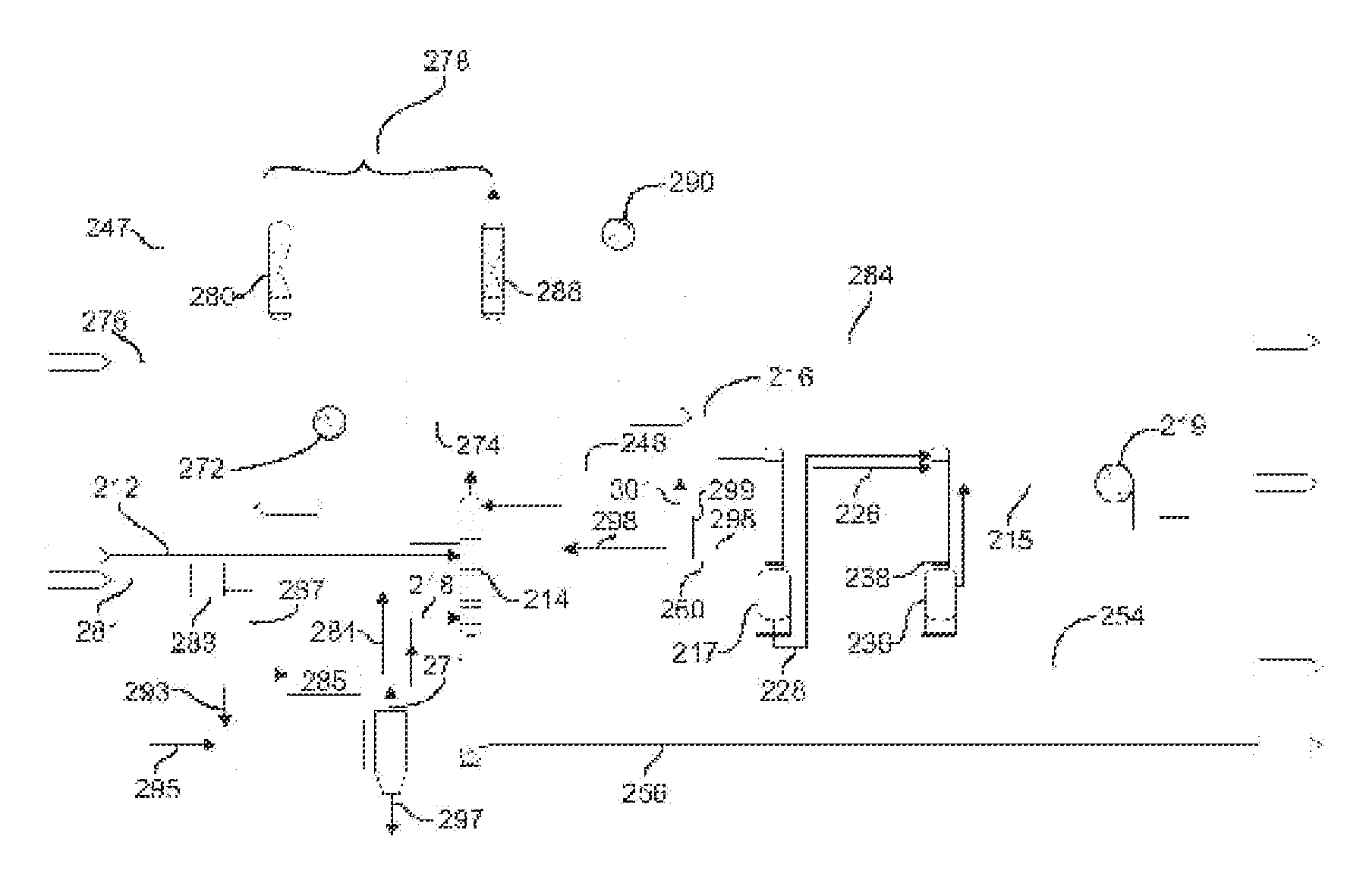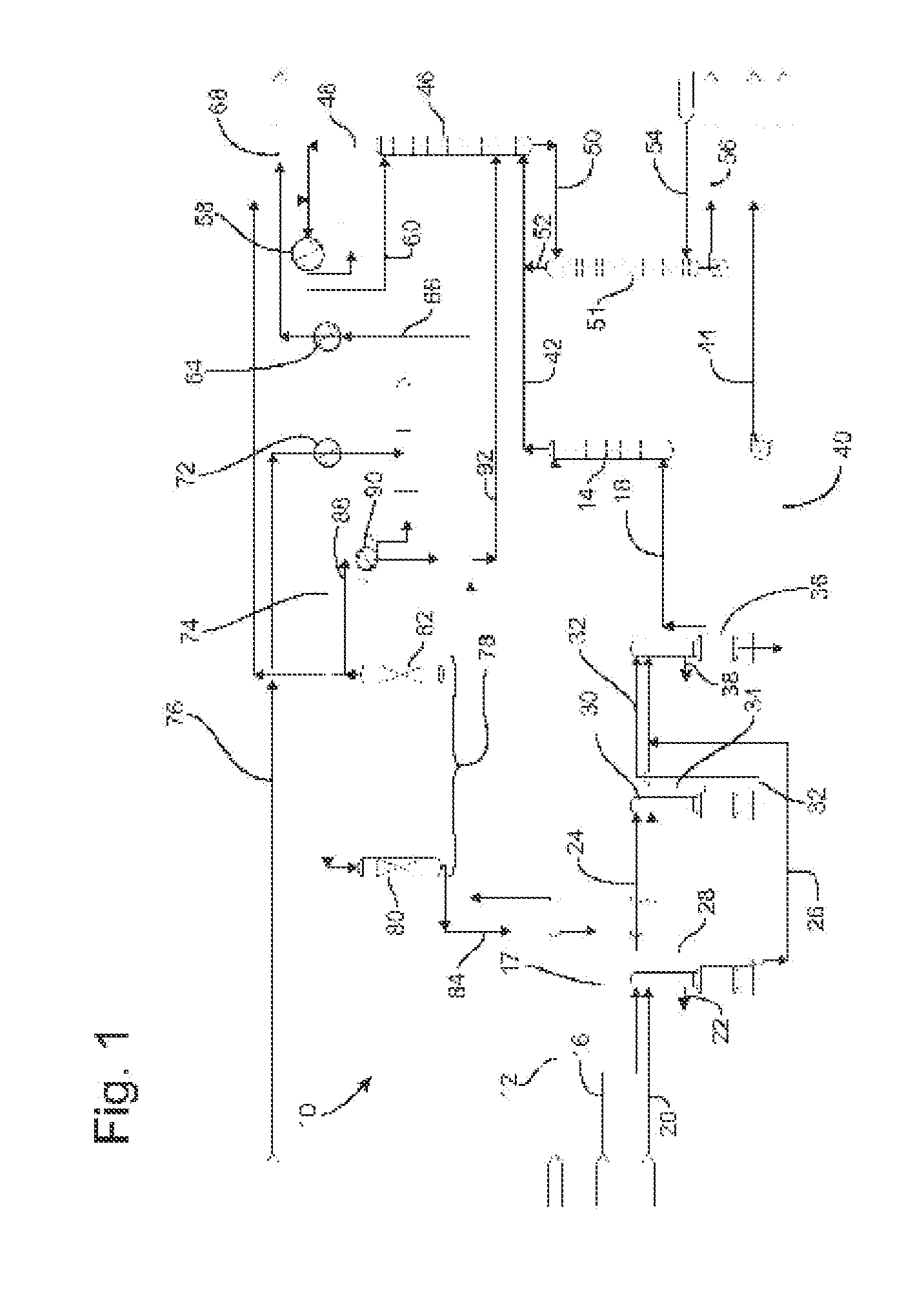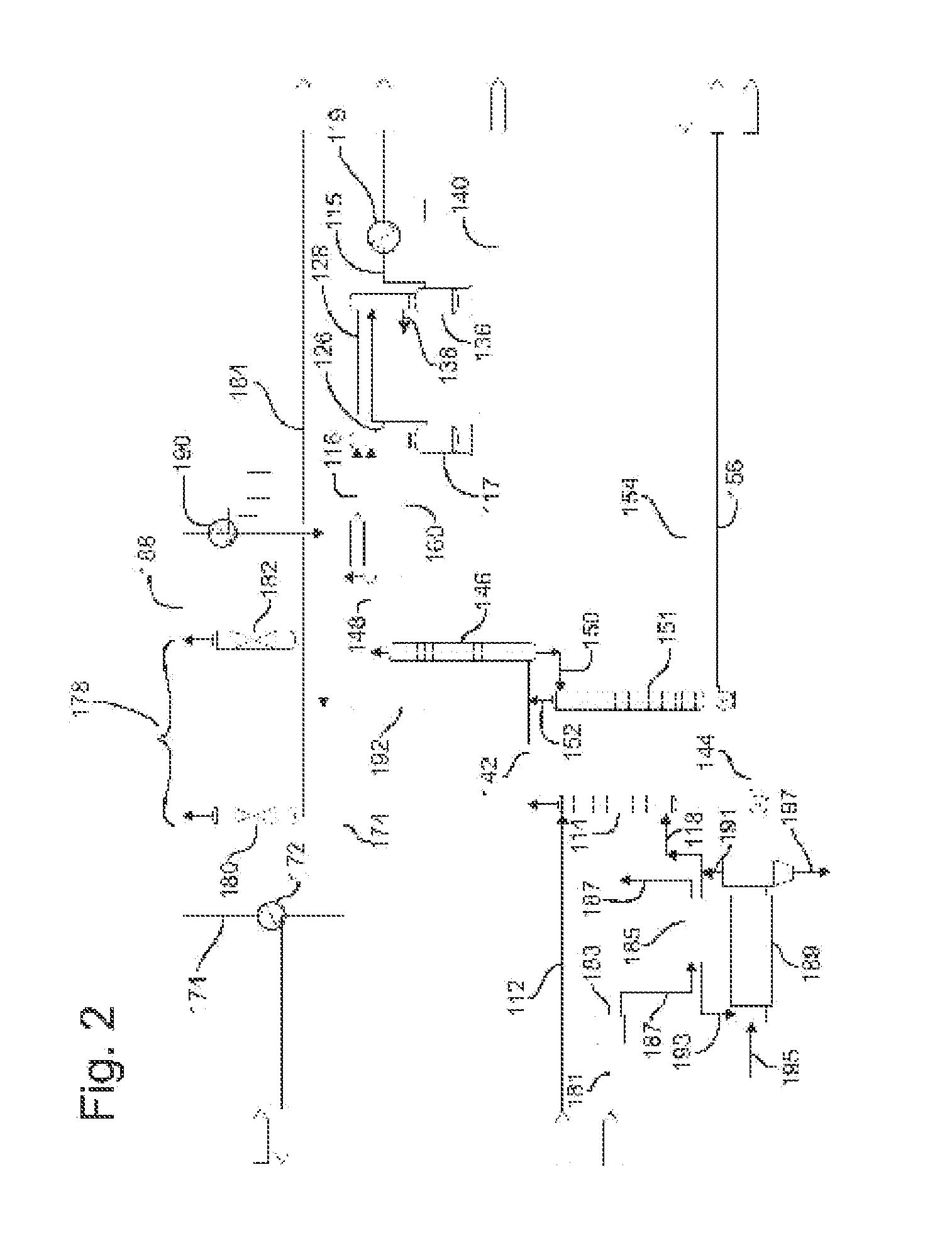Use of superheated steam dryers in an alcohol distillation plant
a technology of alcohol distillation plant and steam dryer, which is applied in the direction of distillation/rectification of fermented solutions, distillation in boilers/stills, separation processes, etc., can solve the problems of removing solids from the production stream, requiring high energy and high difficulty, and high concentration of ethanol, so as to reduce emissions
- Summary
- Abstract
- Description
- Claims
- Application Information
AI Technical Summary
Benefits of technology
Problems solved by technology
Method used
Image
Examples
example
[0084]A first fuel grade ethanol plant was constructed according to the schematic of FIG. 1 and designated, “Control Plant.” A second fuel grade ethanol plant was constructed according to U.S Publication No. 2007 / 0000769 (Brown) which discloses an ethanol distillation with distiller's soluble solids recovery apparatus providing energy economy superior to the typically constructed plant (“Control Plant”). A third fuel grade ethanol plant was constructed according to the schematic of FIG. 2 or 3 and designated, “Dryer Integration Plant.” Simulations were performed on the three designs based on a 55 MMGPY capacity with beer feed at 12 wt % ethanol, 11.95% total solids. Each plant had a beer feed rate of 338,000 lb / hr. The evaporators for all cases were assumed to produce 35% total solids syrup.
[0085]All cases assume that the centrifuges can recover 85% of the suspended solids with a 65% moisture cake and that 40% of the thin stillage is returned to fermentation as backset. Superheated ...
PUM
| Property | Measurement | Unit |
|---|---|---|
| wt. % | aaaaa | aaaaa |
| vol. % | aaaaa | aaaaa |
| size | aaaaa | aaaaa |
Abstract
Description
Claims
Application Information
 Login to View More
Login to View More - R&D
- Intellectual Property
- Life Sciences
- Materials
- Tech Scout
- Unparalleled Data Quality
- Higher Quality Content
- 60% Fewer Hallucinations
Browse by: Latest US Patents, China's latest patents, Technical Efficacy Thesaurus, Application Domain, Technology Topic, Popular Technical Reports.
© 2025 PatSnap. All rights reserved.Legal|Privacy policy|Modern Slavery Act Transparency Statement|Sitemap|About US| Contact US: help@patsnap.com



